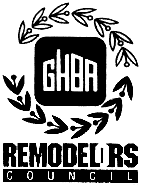Humidity Control
DOUGLAS
E. SMITH
Smith Custom Builders
Remodeling
your home is the perfect time to uprade your existing heating, ventilation
and air-conditioning (HVAC) system with new products.
HVAC is on everyone's mind these days, and is a very hot topic
when dIscussing "humidity removal."
What is the main function of the AC system? It is not just
to keep you cool in summer and warm in winter, it is to remove the unwanted
moisture in your home during cooling season.
A way to explain how this works is to think of what happens
when a cold front moves into the area. The cool dry air clashes with the
warm moist air, condensing the moisture, causing rain.
The slower the front is moving, the longer it usually rains.
The larger the temperature differences between the cold front
and the warm air, the harder it rains literally wringing the moisture
out of the air.
This same principal works with your AC system; the evaporator
coil is approximately 45° to 50° F. When the 76° to 80° air in the home
is drawn across the cold coil, it rains in the drain pan and a drain line
carries the water out. This is how the humidity is removed from your home.
When humidity levels are high, like the conditions covering
the Gulf Coast region, (more than 60 grains of moisture per pound of dry
air) you should run 300 to 350 cubic feet of air per minute of air across
the evaporator coil (blower speed) .
This volume of air across the evaporator coil should give
you a "Delta T ," or split, air temperature across the coil
of between 18° to 20°, providing the ductwork system has been properly
sized to ACCA's manual "D". Check with your AC contractor.
Given this fact, it is easy to lower the fan speed in small
increments to allow the air to stay in contact with the coil surface longer,
resulting in more rain (humidity removal) .

There
are different types of germicidal lights available on the market today,
one of the best that I have seen, can be looked up at www.steril-aire-usa.
com.
The next upgrade that should be made to your HVAC system is "Fresh
Air Make-up" from outside air. These systems are called recovery
ventilators.
This addition to your system does many things, first it will
positively pressurize your home, and most homes have a negative pressure,
which can be seen by dirt and dust entering the home through baseboards,
light switches, plugs, and other openings in the building envelope.
The big problem is the operation of the kitchen vent hood,
bath fans and dryer vent. Every time these fans come on, they remove air
from the home, which must be replaced. This removal of air causes outside
air to enter the home any way it can, like through the chimney. In the
wintertime this can be very dangerous, pulling back into the home carbon
monoxide.
These systems help remove the stagnant air from your home.
This type of system will soon be mandatory as per IRC (International Residential
Code).
Another change can be the number and location of return airs
throughout the home. A good rule of thumb is one return air per 500 square
feet of living space.
This can be done by the use of a large pleated-type fIlter
at the furnace location. Then attached to this filter is a return plenum
box allowing all the return pipes to come together as one.
The goal is to accomplish complete air changes throughout
the home. This application of extra returns will add to the overall comfort
and help to maintain consistent humidity levels and tem- perature throughout
the home.
Code changes for 2003 include all R-8 ductwork This should
be used to reduce the heat gain through the duct liner. In most homes
we run the return air ductwork under the blown in R-38 insulation to help
efficiency.
One
important fact that you must never forget when the fan speed is lowered,
design perimeters change, meaning liquid refrigerant (freon) may not all
boil off in the evaporator coil and can run the risk of flood back to
the compressor. This can result in compressor damage.
To prevent this from happening, one must install the proper type
of expansion valve, which will react quickly and slow down the flow of
refrigerant. The use of an expansion valve increases the dehumidification
capacity by allowing the full capacity of the coil to be utilized
Next, we must know what the humidity levels are in our homes.
You can buy a digital hygrometer and hang it next to your thermostat.
This hygrometer can be purchased through your air-conditioning company,
or over the Web at www.inspectortools.com.
The ideal humidity for the home is between 30 to 50 percent,
if possible. Remember the key to "mold control" is moisture
control. Mold thrives over 55- to 60- percent humidity.
Once you know the humidity in the home, you can have the design
perimeters changed to achieve proper humidity levels.
There are new types of equipment on the market today to help
with the high humidity levels in the home. Most will adjust the blower
speeds to slow the air down over the surface of the evaporator coil.
The longer the air is in contact with the surface of the evaporator
coil, the more moisture that can be removed. Most companies are using
humidistats which control blower speeds.
Also, the use of the "Germicidal Lights" (Ultraviolet)
in the supply plenum can help to sterilize most types of mold in the HVAC
system.
and Remodel Design of the Year under $250,000.
The Greater Houston Builders Association Remodelors Council provided this article.
For more information, contact the council at remodelers@ghba.org or, write/visit Greater Houston Builders Association c/o Remodelors. Council 9511 W. Sam Houston Parkway N., Houston, TX 77064.